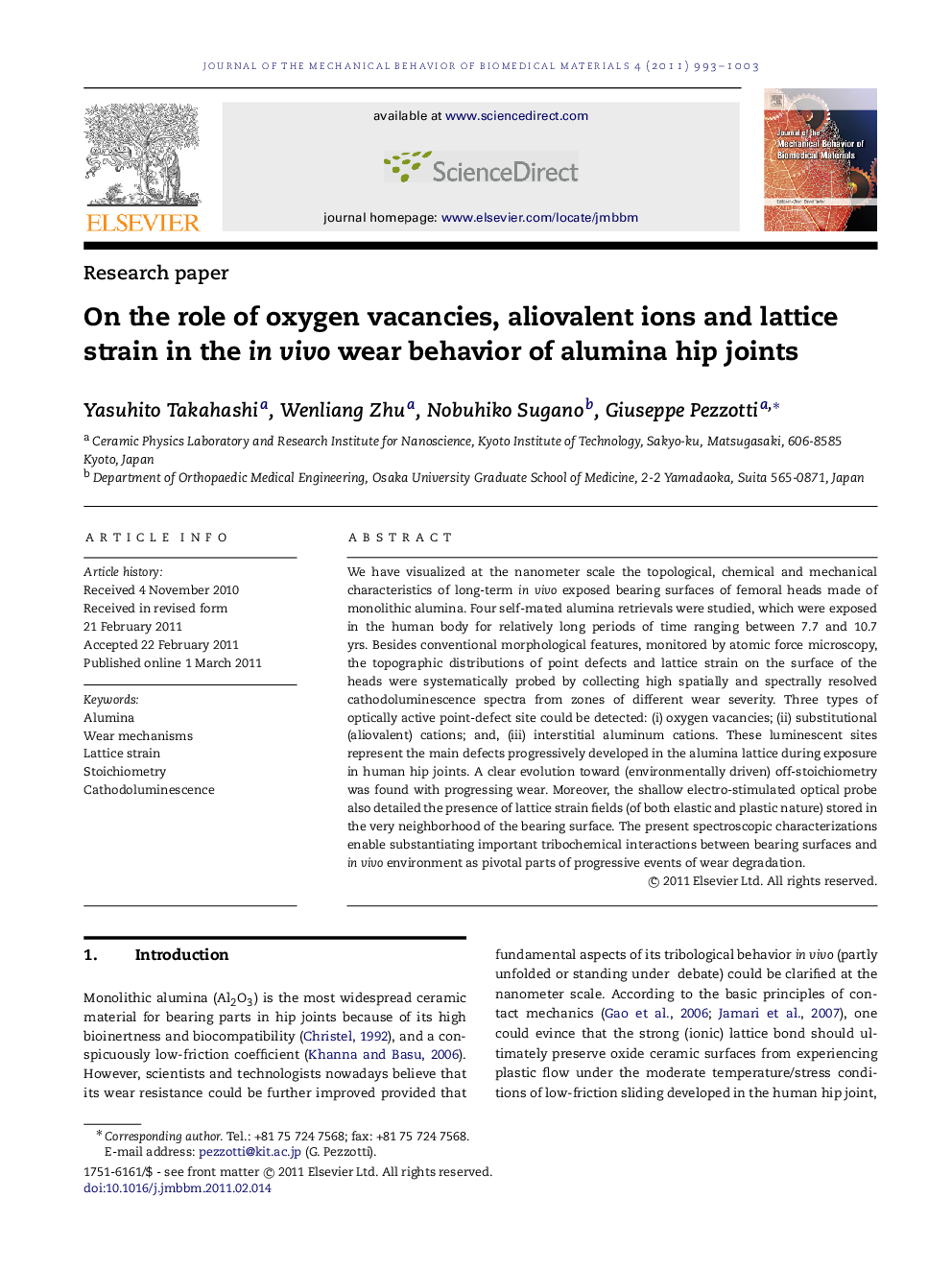| Article ID | Journal | Published Year | Pages | File Type |
|---|---|---|---|---|
| 811284 | Journal of the Mechanical Behavior of Biomedical Materials | 2011 | 11 Pages |
We have visualized at the nanometer scale the topological, chemical and mechanical characteristics of long-term in vivo exposed bearing surfaces of femoral heads made of monolithic alumina. Four self-mated alumina retrievals were studied, which were exposed in the human body for relatively long periods of time ranging between 7.7 and 10.7 yrs. Besides conventional morphological features, monitored by atomic force microscopy, the topographic distributions of point defects and lattice strain on the surface of the heads were systematically probed by collecting high spatially and spectrally resolved cathodoluminescence spectra from zones of different wear severity. Three types of optically active point-defect site could be detected: (i) oxygen vacancies; (ii) substitutional (aliovalent) cations; and, (iii) interstitial aluminum cations. These luminescent sites represent the main defects progressively developed in the alumina lattice during exposure in human hip joints. A clear evolution toward (environmentally driven) off-stoichiometry was found with progressing wear. Moreover, the shallow electro-stimulated optical probe also detailed the presence of lattice strain fields (of both elastic and plastic nature) stored in the very neighborhood of the bearing surface. The present spectroscopic characterizations enable substantiating important tribochemical interactions between bearing surfaces and in vivo environment as pivotal parts of progressive events of wear degradation.
